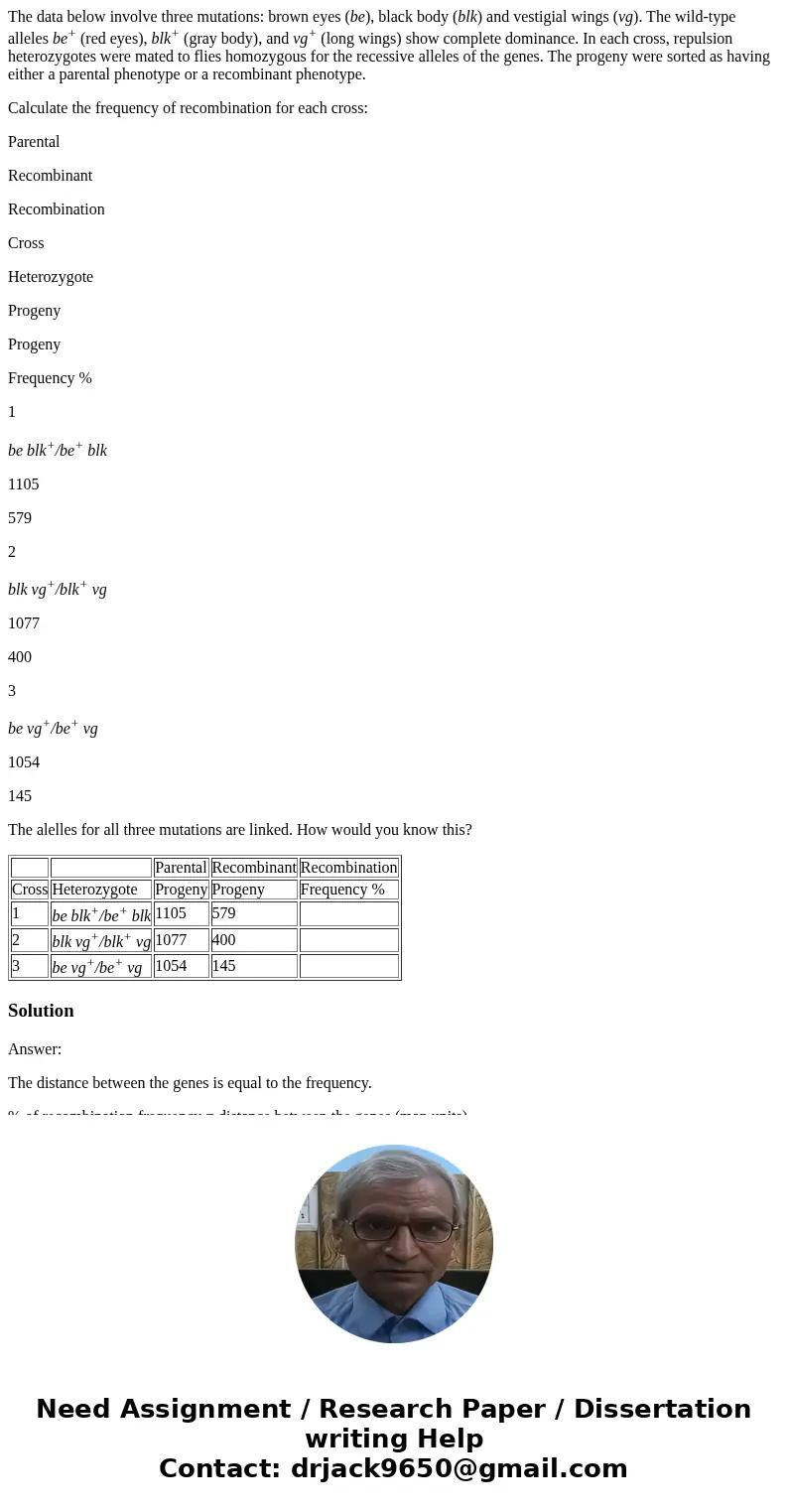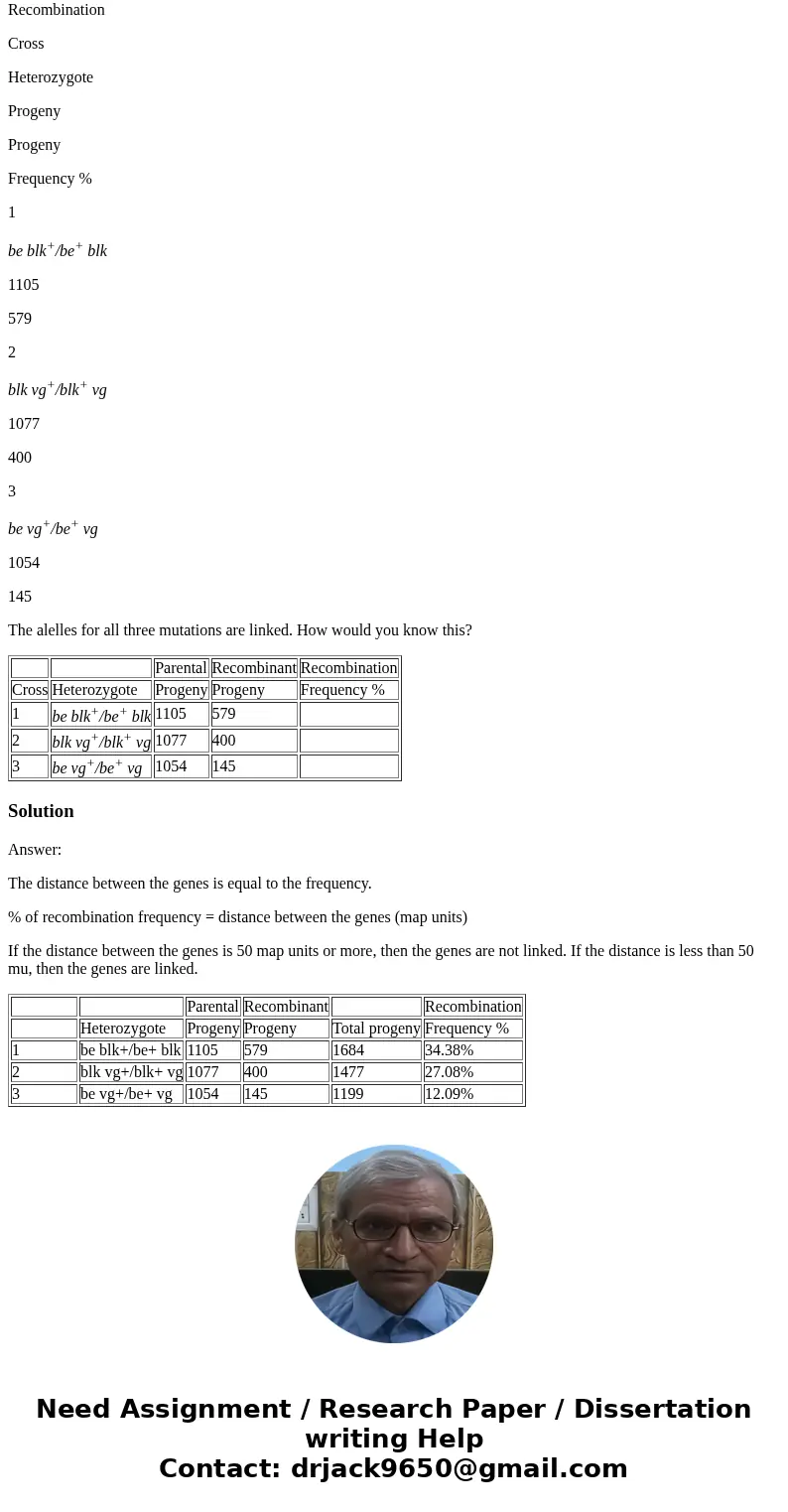The data below involve three mutations brown eyes be black b
The data below involve three mutations: brown eyes (be), black body (blk) and vestigial wings (vg). The wild-type alleles be+ (red eyes), blk+ (gray body), and vg+ (long wings) show complete dominance. In each cross, repulsion heterozygotes were mated to flies homozygous for the recessive alleles of the genes. The progeny were sorted as having either a parental phenotype or a recombinant phenotype.
Calculate the frequency of recombination for each cross:
Parental
Recombinant
Recombination
Cross
Heterozygote
Progeny
Progeny
Frequency %
1
be blk+/be+ blk
1105
579
2
blk vg+/blk+ vg
1077
400
3
be vg+/be+ vg
1054
145
The alelles for all three mutations are linked. How would you know this?
| Parental | Recombinant | Recombination | ||
| Cross | Heterozygote | Progeny | Progeny | Frequency % |
| 1 | be blk+/be+ blk | 1105 | 579 | |
| 2 | blk vg+/blk+ vg | 1077 | 400 | |
| 3 | be vg+/be+ vg | 1054 | 145 |
Solution
Answer:
The distance between the genes is equal to the frequency.
% of recombination frequency = distance between the genes (map units)
If the distance between the genes is 50 map units or more, then the genes are not linked. If the distance is less than 50 mu, then the genes are linked.
| Parental | Recombinant | Recombination | |||
| Heterozygote | Progeny | Progeny | Total progeny | Frequency % | |
| 1 | be blk+/be+ blk | 1105 | 579 | 1684 | 34.38% |
| 2 | blk vg+/blk+ vg | 1077 | 400 | 1477 | 27.08% |
| 3 | be vg+/be+ vg | 1054 | 145 | 1199 | 12.09% |


 Homework Sourse
Homework Sourse